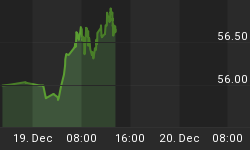Elliott Wave International's free 118-page Independent Investor eBook explains why financial markets are NOT a matter of action and reaction.
"There is no group more subjective than conventional analysts, who look at the same 'fundamental' news event a war, interest rates, P/E ratio, GDP, economic policy, the Fed's monetary policy, you name it and come up with countless opposing conclusions. They generally don't even bother to study the data." -- EWI president Robert Prechter, March 2004 Elliott Wave Theorist.
If you watch financial news, you probably share Bob Prechter's sentiment. How many times have you seen analysts attribute an S&P 500 rally to "good news from China," for example -- only to focus on a different, supposedly bearish, news story later the same day if the rally fizzles out?
You need objective tools to make objective forecasts. So, we put together a unique resource for you: a free 118-page Independent Investor eBook, where you see dozens of examples and charts that show what really creates market trends.
Here's a quick excerpt. For details on how to read the entire Independent Investor eBook online now, free, look below.
Independent Investor eBook
Chapter 1: What Really Moves the Markets? (excerpt)Action and Reaction
In the world of physics, action is followed by reaction. Most financial analysts, economists, historians, sociologists and futurists believe that society works the same way. They typically say, "Because so-and-so has happened, such-and-such will follow." ... But is it true?
Suppose you knew for certain that inflation would triple the money supply over the next 20 years. What would you predict for the price of gold?
Most analysts and investors are certain that inflation makes gold go up in price. They view financial pricing as simple action and reaction, as in physics. They reason that a rising money supply reduces the value of each purchasing unit, so the price of gold, which is an alternative to money, will reflect that change, increment for increment.
Figure 4 shows a time when the money supply tripled yet gold lost over half its value. In other words, gold not only failed to reflect the amount of inflation that occurred but also failed even to go in the same direction. It failed the prediction from physics by a whopping factor of six, thereby unequivocally invalidating it.
Investors who feared inflation in January 1980 were right, yet they lost dollar value for two decades... Gold's bear market produced more than a 90% loss in terms of gold's average purchasing power of goods, services, homes and corporate shares despite persistent inflation!
How is such an outcome possible? Easy: Financial markets are not a matter of action and reaction. The physics model of financial markets is wrong. ...
Cause and Effect
Suppose the devil were to offer you historic news a day in advance. ... His first offer: "The president will be assassinated tomorrow." You can't believe it. You and only you know it's going to happen. The devil transports you back to November 22, 1963. You short the market. Do you make money? ...
[...continued in the free 118-page Independent Investor eBook]
Read the rest of the eye-opening report online now, free! All you need is a free Club EWI profile. Here's what else you'll learn:
- The Problem With "Efficient Market Hypothesis"
- How To Invest During a Long-Term Bear Market
- What's The Best Investment During Recessions: Gold, Stocks or T-Notes?
- Why "Buy and Hold" Doesn't Work Now
- How To Be One of the Few the Government Hasn't Fooled
- How Gold, Silver and T-Bonds Will Behave in a Bear Market
- MUCH MORE
Keep reading this 118-page Independent Investor eBook now, free -- all you need is a free Club EWI profile.
This article was syndicated by Elliott Wave International and was originally published under the headline What Really Moves the Markets: News? The Fed? The Real Answers Will Surprise You. EWI is the world's largest market forecasting firm. Its staff of full-time analysts led by Chartered Market Technician Robert Prechter provides 24-hour-a-day market analysis to institutional and private investors around the world.
















